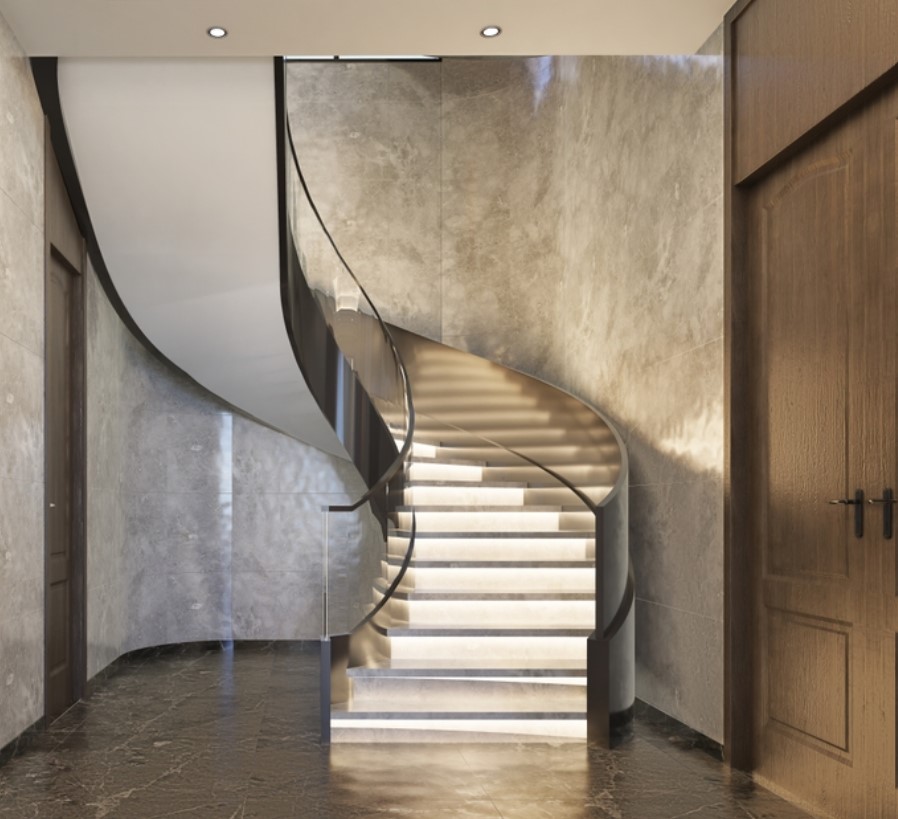Take a look at your staircase! You may not often give a thought to staircases unless you trip over one or see a grandly designed one in a beautiful magazine spread. However, the fact really is that they are responsible for a lot in the home, even if people think about them more in physical terms than in how they are designed.
This is just the right time for a new staircase installation or to renovate an older one to give it a fresh touch in terms of both function and style. You want it to look great while keeping everyone safe.
What’s the Staircase Actually For?
It may seem self-evident, but listen to this: Instead of deciding about an aesthetic or material, consider what form you want this staircase to take in your life:
- Is it the main staircase that is in use by everyone in the house every day?
- Is it mainly for guests or hidden away in a side hallway?
- Are you struggling in a tight space where every inch counts?
Above all, think about who uses it. A small kid? Elderly parent? A teenage who drags every clothing to the laundry and back again? Those are going to form everything-from how steep the staircases are to how sturdy the railing needs to be.
In short, think about all that before you go for the Pinterest-perfect photos; the staircase should fit into your life, not just into your Pinterest board. For more practical tips and inspiration, check out this ultimate guide to staircase installation.
Materials Matter for Staircase Installation
Now for the fun part: picking what your staircase is made of. But let’s not just think about looks. Here’s a quick rundown:
- Wood: Always a favorite. It’s warm, classic, and comes in lots of finishes. Great for traditional or cozy spaces.
- Metal: Clean, strong, and low-maintenance. Fits modern and industrial homes well.
- Glass: Super sleek and makes a space feel open. Just be ready to wipe down fingerprints all the time.
- Concrete: Bold and solid. Works great in modern homes or outdoor setups.
Building Codes: Not Glamorous, But Super Important
Okay, this part isn’t exciting, but it could save you a ton of trouble. Staircases need to meet building codes. Period.
That means:
- Treads have to be deep enough so you don’t feel like you’re falling forward
- Risers shouldn’t be so high that you’re basically climbing a ladder
- Railings need to be at a safe height
- And those vertical bars (balusters)? They need to be spaced so kids can’t squeeze through
Yes, You Can Be Stylish and Safe
People often think safety features ruin the vibe. But done right, they actually elevate it.
Try things like:
- LED strip lights under each step so you can see better at night (and they look really cool)
- Non-slip surfaces—textured wood, anti-slip tile, or even stair runners
- Creative railings made of cable, wrought iron, or matte-black metal
- Landings in the middle of long staircases to make them easier to climb and break up the design
Safe doesn’t have to mean boring. With the right design, it adds character and peace of mind.
Don’t Let Your Staircase Eat Up Space
Staircase installation can take up a shocking amount of room. If your home’s on the smaller side, plan carefully.
Some smart space-saving options:
- L-shaped or U-shaped stairs use vertical space more efficiently
- Spiral staircases are great in lofts or tight corners (though not always ideal for hauling baskets)
- Under-stair storage can be a game changer—think drawers, cabinets, or even a cozy little nook
Match Your Home’s Vibe
Your staircase installation is part of the home’s story. A farmhouse-style staircase in a sleek, modern loft is likely to feel out of place. So, take cues from what’s already around you.
Some popular looks:
- Floating stairs for that airy, minimal feel
- Painted risers or tile accents if you like a little personality
- Chunky wood and iron railings for a rustic edge
- Glass balustrades to open things up
Prepping for Install Day
So, you’ve picked your design, hired the pros, and scheduled the job. Now what?
Here’s what helps:
- Clear the space—furniture, rugs, plants, everything
- Cover nearby floors or walls (dust happens)
- Keep pets and kids safely out of the way
- Ask the crew if they need anything from you ahead of time
A little prep makes the whole process smoother for everyone involved.
Latest Blogs: Home Remodeling Services: Everything You Need to Know Before Starting
FAQs
How long does it take for a staircase installation?
Basic setups can take 1–3 days. More complex custom designs might take a week or so.
Can I just redo the railings and keep the old stairs?
In many cases, yes! As long as the structure is sound, cosmetic upgrades can make a big difference.
Will I need a building permit?
Probably, yes. Anything that changes the structure of your home typically needs one.
What’s the cost like?
It varies. A basic staircase might run a few thousand dollars. Custom jobs with premium materials can go higher.
Conclusion
When the final touches are given to the staircase, such that it is no longer a staircase, it is daily life and a large part of your home personality. Thoughtful placement of the staircase makes for safety, utility, and an asking price.
So, take your time to plan well and hire the right company for staircase installation. BME Building Solutions knows staircases inside and out, from smart layouts to stylish finishes.


